
With the Future of Work and new demands that have arisen out of the workforce are also new expectations with technical tools used to guide users that are working remotely. This study identifies the current trends with remote work as well as what the pain points are in relation to working online. It then supports the use of UnaWork as a way to upgrade the current systems into a completely optimized approach to working online.
The UnaWork was tested with a total of 437 random participants. There were two pieces of information that were pertinent to this test.
1. What was their current relationship to remote work?
2. Would UnaWork be able to solve their main pain points in the industry?
By identifying the main needs of those working in diverse professions and alternative job profiles, it identifies proof of concept of UnaWork by highlighting the current dynamics with remote work as well as the ability for UnaWork to solve the major pain points through the new technology.
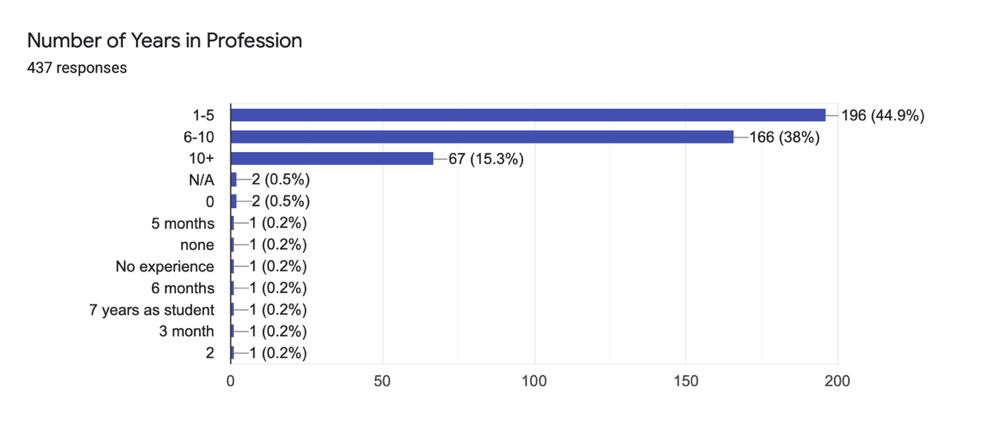
Job Position and Number of Years
A diverse population was asked questions to identify potential needs for remote work within their given profession.
Of those that were asked, 10.5% were executives, 26.1% were managers, and 57.4% were team members.6.2% of those asked were in a different profession that did not require remote work tools or which were answered in an “other” category.
The demographics of the group were also diverse with the number of years that were served in a given profession. Of those asked, 44.9% were in the profession for 1-5 years, while 38% were in the profession for 6-10 years and 15.3% had 10+ years of experience.
These demographics highlight a state of diversity and showcase a microcosm of those who would use the UnaWork. The combination of status with job profession as well as those that have specific years of experience is also reflective of a specific percentage within a working environment.
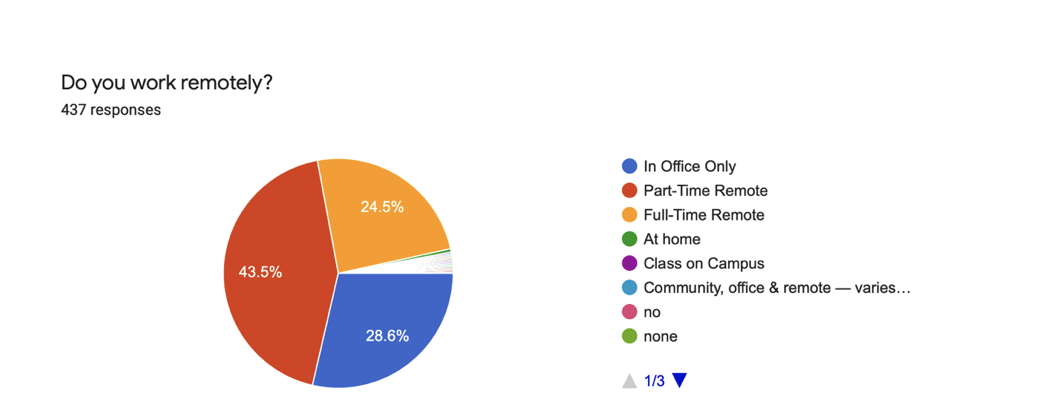
Number of People That Work Remotely
The next set of questions asked about the use of remote tools as well as how equipped one was to use the tools.
The first analysis was related to those who worked remotely. It was noted that 24.5% of individuals work in a full-time remote position and 43.5% work in a hybrid environment of part-time remote work. Out of this group, 28.6% stated that they worked only in the office.
This shows that a total of 68% of those that are working require the use of remote tools.
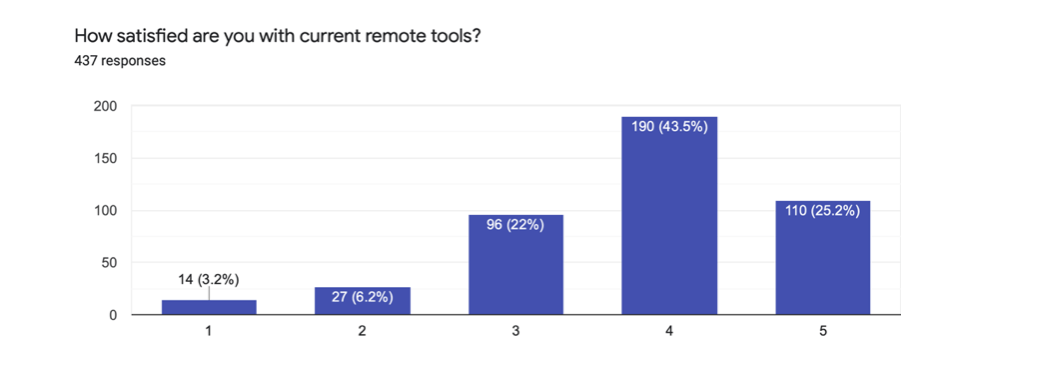
Satisfaction with Current Remote Tools
The following question asked about the satisfaction level of the current remote tools that were in the marketplace with 1 being dissatisfied and 5 being the most satisfied. Those using remote tools stated that they were “satisfied” with a rating of 4 at 43.5%. The next highest answer was 25.2%, stating they were very satisfied with remote tools.
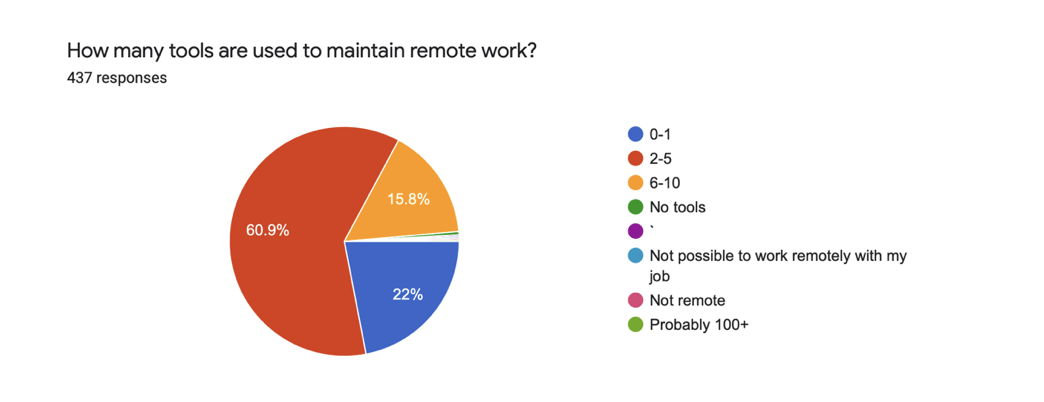
Number of Tools for Remote Work
While there was a noted higher level of satisfaction with remote tools, the following questions show that there are pain points that are reached with the use of remote work. A total of 60.9% of users have to use 2-5 tools for remote work while 15.8% use 6-10 tools and with one answer signifying that they use over 100 tools to manage their remote work.
This shows that, even with those who are working in a hybrid setting, there is a probability of using several tools to work remotely.

Issues with Remote Platforms
The satisfaction level of working remotely was followed by the main pain points with those that are using the tools. The answers that dominated this were 51% who stated that there was a lack of communication, 24% that identified the use of too many tools, 39.6% that highlighted issues with management tasks, and 23.1% who stated that there was missing information.
These issues highlight that, despite the satisfaction of using tools and the several platforms used, there are central pain points that are supposed to serve as the foundation of remote management boards that are unaccounted for.
UnaWork was then provided to those who took the study, specifically to compare and look at the differences with the platform in relation to other remote management boards and to highlight whether it would solve the issues experienced with other remote boards.
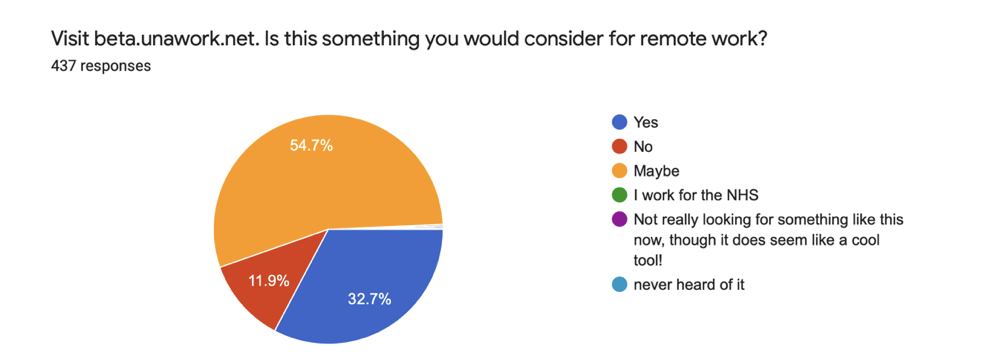
Participants That Would Try UnaWork
Out of 437 participants, 87.4% answered that they would consider UnaWork (maybe or yes) for their remote work tool. This shows that, while many are using other platforms, UnaWork would serve as a substantial switch for those using remote tools.
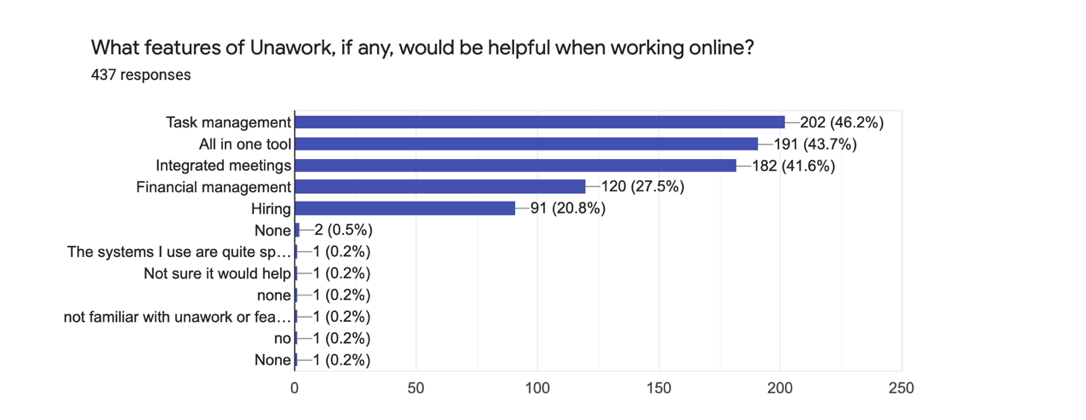
What UnaWork Solves For
The next question identified what parts of UnaWork would be of the most important to those interested in the tool. The answers identified that the meetings, task management, all-in-one-tool and finances were the most important. This also showcases that the main pain points of other tools would support those who were experiencing fallbacks with other systems.
When asking for other responses or what individuals would like to see, the concept of combining communication tools with task management was the most important to support and upgrade the use of online tools.
The influx of remote and hybrid work shows the need and demand for tools that help to serve those who are working in the environment we now consider as the future of work. To compensate for the new workforce, tools such as the UnaWork can resolve many of the central issues that are a part of remote work.
The tools that are used within the workforce usually apply to 1-10 different platforms that are used just for communication and task management. This creates inconsistencies and diversions in the work that is used.
While many noted satisfaction with the platforms available, there was also identification of key issues that the remote tools didn’t solve, many of which were developed with the expectation that they would meet those demands. Remote work management, tasks, and meetings were highlighted as not being solved by those who spoke about UnaWork.
The ability of UnaWork to solve these specific issues also shows the need within the market to have all-inclusive remote work support. By creating an integrative platform that extends beyond the basic functions of remote platforms, users will move into a new generation of working online.